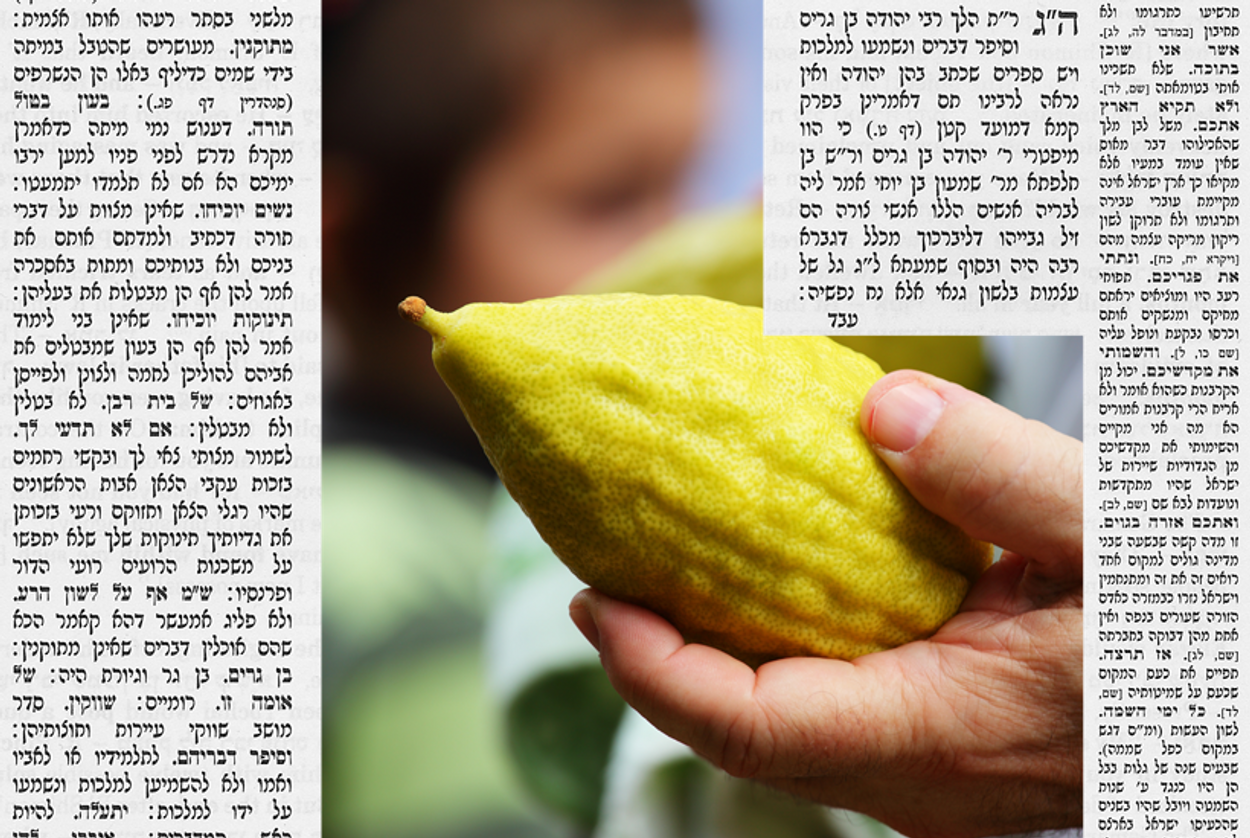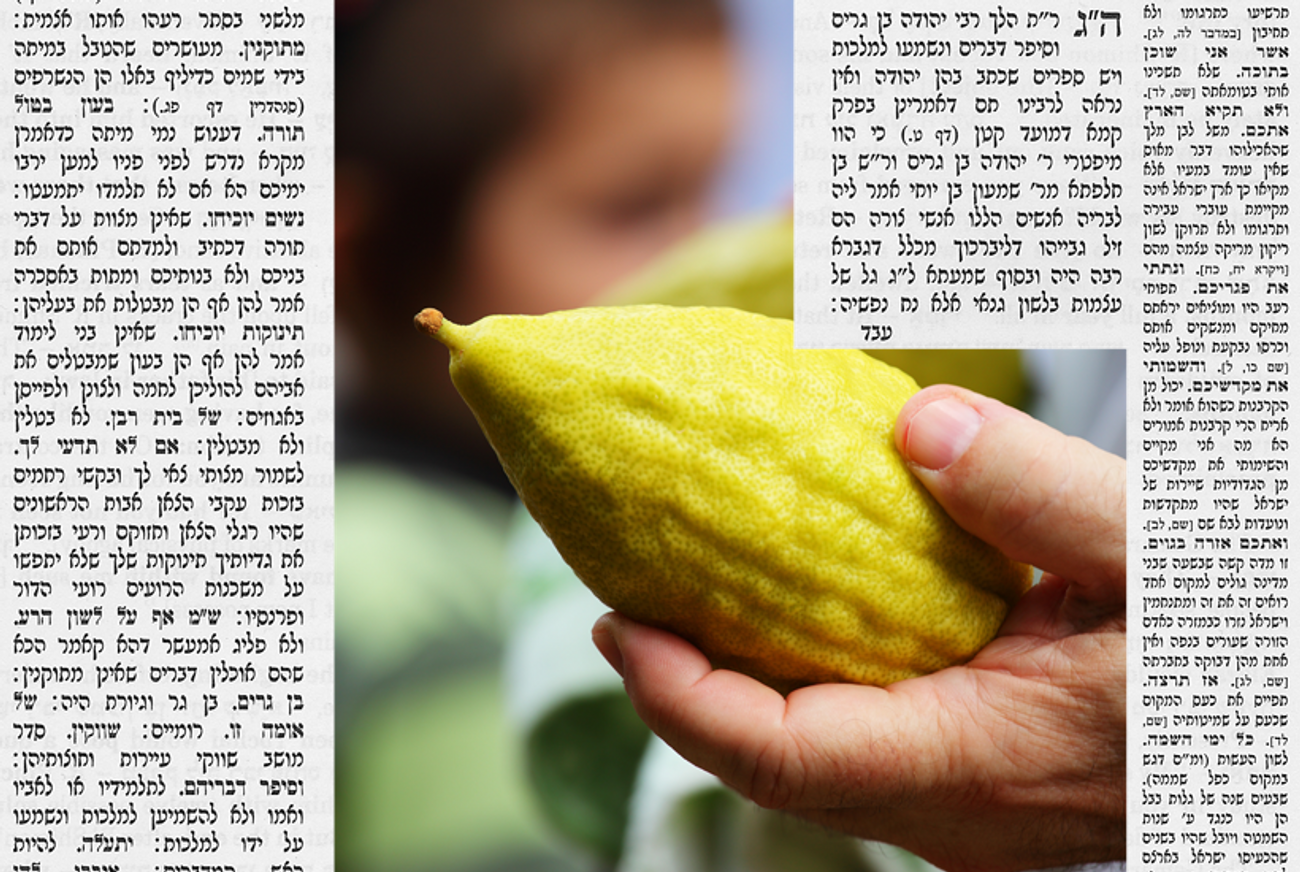The Talmud Is a Training Manual for Jews Preparing for the Next Holy Era
For a hundred generations Jews lived in anticipation of redemption, a historical tension that continues to define Judaism




Literary critic Adam Kirsch is reading a page of Talmud a day, along with Jews around the world.
Tractate Sukkot, whose third chapter Daf Yomi readers finished this week, is not one of the parts of the Talmud primarily concerned with the Temple. Unlike Yom Kippur, which in Temple times was a holiday focused on the high priest in Jerusalem, Sukkot is a holiday celebrated by all Jews at home. Yet reading the Talmud, you never know when a memory of the Temple, and a longing for its rebuilding, is going to loom up in the midst of the discussion. That is what happens on Sukka 41a, when we get a glimpse of the rabbis’ deep conviction that the Temple will certainly be rebuilt—and not just someday in the indefinite future, but possibly at any given moment.
So, what would happen, the rabbis ask, if the Temple happened to be rebuilt on the 16th of Nisan? That is the second day of Passover and the day when the priests began to offer the omer sacrifice—an offering of barley that indicated it was legal to begin eating produce from the new year’s harvest. While the Temple stood, there was a rule that Jews had to wait to begin eating that produce until the afternoon of the 16th, when they could be sure the sacrifice was complete. Once the Temple was destroyed, however, the omer could no longer be offered, so Jews began to eat the new year’s harvest at dawn on the 16th.
To prevent this, Rabbi Yochanan ben Zakkai instituted a rule that the people had to wait until the next day, the 17th of Nisan, to start eating the new crop. Why this stringency? Because, Yochanan reasoned, the Temple was going to be rebuilt, and when it was, Jews would once again have to wait for the sacrifice of the omer to start eating the new crop. But if in the meantime they had gotten used to eating it at dawn on the 16th, they might not be patient enough to wait, and so they would violate the law. Better to accustom them to waiting a whole extra day, so they would remain ready to resume the Temple calendar when necessary.
This way of thinking only makes sense if you believe, as Yochanan did, that “soon the Temple will be rebuilt”—and not just soon, but suddenly, without preparation. In other words, the Third Temple is not going to be a massive, long-term construction project, like the First Temple that Solomon built, and the Second Temple that Ezra and Nehemiah built. It is going to spring up or descend from heaven all at once, intact—and in that moment, Jews will suddenly have to go back to obeying a whole host of laws that currently seem obsolete. For this reason, Jews have to remain in training, ready to resume Temple life when the need arises; and the Talmud, one might say, is their training manual.
The Gemara, for its part, contemplates various alternatives for exactly when the Temple might be restored. Yochanan’s concern was that the Jews would be caught unprepared on the 16th of Nisan. But “if we say that it will be rebuilt on the 16th,” during the day, the Gemara reasons, then that morning there will have been no Temple, and no possibility to sacrificing the omer; and so it will be all right for Jews to begin eating the new crop in the morning. And if we say that the Temple is rebuilt the day before, on the 15th, then surely the priests will immediately get back into the swing of things and start by sacrificing the omer right away on the morning of the next day. In that case, by afternoon on the 16th it will be permitted for Jews to start eating the new crop. So, why doesn’t Yochanan just make that the rule while we are Temple-less—that the afternoon of the 16th is the starting-point? Why does he insist on waiting until the 17th?
As always, the Gemara has an answer. What Yochnan is worried about is the possibility that the Temple will be restored during the night between the 15th and the 16th of Nisan. This would be inconvenient, to be sure, but it might happen; and if it did, then when the 16th dawned, the priests would not yet have had the chance to prepare the barley for the omer offering, and the sacrifice would be late. If that happened, then it might not take place until the afternoon; and if the Jewish people had grown accustomed to eating the new crop starting at noon, they might end up violating the law.
So many contingencies, such carefulness about preserving the law—and all because the Temple, which had been gone for hundreds of years by the time the Talmud was compiled, might spring back into existence at any moment. This little digression in Tractate Sukka helped me realize that Jews for a hundred generations lived in this kind of perpetual anticipation of redemption—a historical tension that continues to define Judaism.
As always, however, redemption takes up only a fraction of the Talmud’s attention. Most of this week’s Daf Yomi reading was devoted to matter-of-fact questions about the four species used on Sukkot. Leviticus commands us to take “the fruit of a beautiful tree,” but how do we know that this means an etrog specifically? Rabbi Meir deduces this by invoking another verse, which refers to “a tree for food.” Put the two verses together, Meir says, and you learn that on Sukkot we need “a fruit that the taste of its tree and the taste of its fruit are alike.” Because the etrog is mostly peel, it tastes a bit woody, like the trunk it grows on. In this way, the notorious inedibility of the etrog is converted into a positive.
The requirement of beauty also means that the etrog must be in good condition, pleasant to look at. The Mishna explains on Sukka 34b: “If boil-like blemishes arose on the majority of the etrog; if its pestle-like protuberance was removed; if the etrog was peeled, split, or pierced and is missing any amount; it is unfit.” Likewise, an etrog has to be yellow—black or green varieties are not valid. About the size of the fruit there is less strictness: It can be as small as an egg or so large that you need both hands to hold it. Bigger than that, however, and the etrog becomes unattractive and therefore unfit: “There was an incident involving Rabbi Akiva, who came to the synagogue, and his etrog was so large that he carried it on his shoulder. … The sages said to him: ‘That is not beauty.’ ”
And there are many other details to take note of. The palm, myrtle, and willow branches that are bound together in the lulav—what material can be used to bind them? Preferably a fiber from a palm tree, but Rabbi Meir allows a string or cord; a gold ring, such as people used in Jerusalem, is only permitted as decoration. Why do we wave the lulav in six directions? To indicate that all of the earth, and the heavens too, belong to God—but also, apparently, as a magic charm to ward off bad weather, or even worse things: “When Rav Acha bar Ya’akov would move the lulav to and fro, he would say: This is an arrow in the eye of Satan.” A great deal of the chapter is devoted to highly technical rules about tithing etrogs and how to acquire one in a Sabbatical year.
Finally, in the last section of Chapter 3, the rabbis ask how old a boy must be before he begins to perform the mitzvah of the lulav. The answer is he should start as soon as possible: “A minor who knows how to wave the lulav is obligated.” And the same is true, the Gemara explains, of other mitzvot. As soon as he can wrap himself in a garment, he must wear tzitzit; as soon as he can keep tefillin clean, he should wear them. And as soon as he can talk, the Talmud instructs, he should be taught the Shema and a verse from the Torah. Since the Shema is also the last prayer a Jew is supposed to say before dying, a Jewish life is bounded on either side by the declaration of God’s unity—which is a way of giving our lives unity, as well.
Adam Kirsch is a poet and literary critic, whose books include The People and the Books: 18 Classics of Jewish Literature.